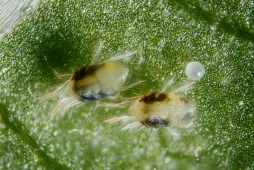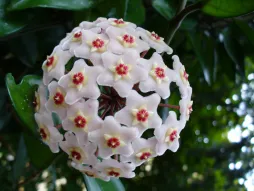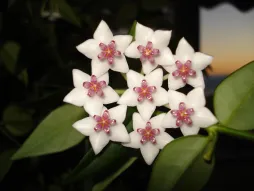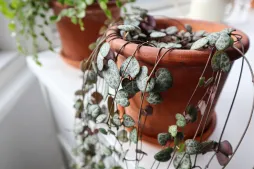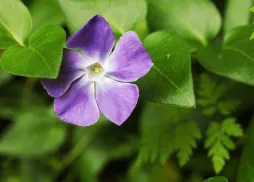Hoya Kerrii, the plant with heart-shaped leaves
Native to Southeast Asia, Hoya Kerrii is the star of florists, garden centers and home decor stores in the run-up to Valentine's Day. With its heart-shaped leaves, this succulent plant of the Apocynaceae family has earned the nickname of love plant.
How to recognize Hoya Kerrii, the love plant?
Hoya Kerrii is a fat, climbing perennial. In the wild, its vines grow up to four meters high. Indoors, they rarely exceed three meters. The hairless stem measures less than a centimetre in diameter.
If Hoya Kerrii is nicknamed the love plant, it's because of its fleshy foliage. Each leaf is shaped like an inverted heart, five centimetres wide. Green, they may be variegated with white, depending on the variety.
Hoya Kerrii flowers from May to October. Only mature specimens produce an inflorescence five centimetres in diameter. It supports some twenty star-shaped flowers, similar to those of porcelain flower or miniature Wax Flower. The white of the petals contrasts with the brown of the stamens. From a distance, the blossoms look like porcelain.
The love plant is non-toxic. You can safely give this indoor succulent to your loved ones, even if they share their lives with animals.
Our maintenance tips
Your Hoya kerrii is an easy-going plant. It won't mind if you forget to water it. But it does require patience. It may be several years before it develops new leaves or flowers.
Watering
Water when the soil is dry, for about three centimeters. Use room-temperature, non-calcareous water, preferably rainwater. When watering, avoid wetting the leaves.
Thirty minutes after watering, drain off any stagnant water in the saucer. It may rot the roots.
To improve humidity, place your Hoya kerrii with your other plants or place its pot on a dish of moist clay balls.
Spray
Your Hoya kerrii appreciates humidity. In addition to watering, mist its foliage with non-calcareous water at room temperature. Be careful to spray only the leaves and avoid the flowers!
Repotting
Every spring, repot your Hoya kerrii to give it more space.
Choose a pierced container only slightly larger than the previous one. Opt for a ceramic or terracotta model: they promote evaporation and prevent moisture from lingering at the bottom. You can also place a bed of gravel or clay balls at the bottom of the pot.
Hoya kerrii cactus and succulents need a draining substrate, such as potting soil for cacti and succulents. Pour in a layer, plant your subject in the middle and fill in with potting soil. Pack gently to avoid damaging the root system.
Fertilization
To promote the growth of your Hoya kerrii, apply fertilizer in spring and summer.
For your hoya kerrii to thrive, add special orchid fertilizer to its watering solution.
Prune
Faded flowers fall off by themselves, so it's best not to pull them out. You risk damaging the peduncles and preventing the next bloom. The same goes for umbels: leave them alone. They can accommodate new flowers.
Pinch
Pinch your Hoya kerrii during its growing season.
To give your plant a compact habit, pinch back young shoots. This improves branching.
Cutting
Cutting is carried out during the strong growth phase, generally in spring and early summer.
Using disinfected pruning shears, remove a stem ten to fifteen centimeters long. Remove the leaves at the base and keep those at the top.
Immerse the lower part of your cutting inclear water at room temperature. Make sure the level remains even and the liquid clean.
Protect your cutting from direct sunlight.
Protect your cutting from direct sunlight.
Diseases / Threats
Information
| Family | Apocynaceae - Apocynaceae |
| Type | Hoya - Hoya |
| Species | Hoya kerrii - Hoya kerrii |
| Lifecycle | Perennial |
| Foliage | Evergreen |
| Exposure | |
| Substrats | |
| Planting methods |
In pots In tubs Planter |
| Categories | |
| Tags |
Beginner Flowery Small pot |
| Origin |
Southeast Asia |
| Hardiness (USDA) | 11b |
| Leaf color |
|
| Flower colors |
|
Discover plants from the same family












